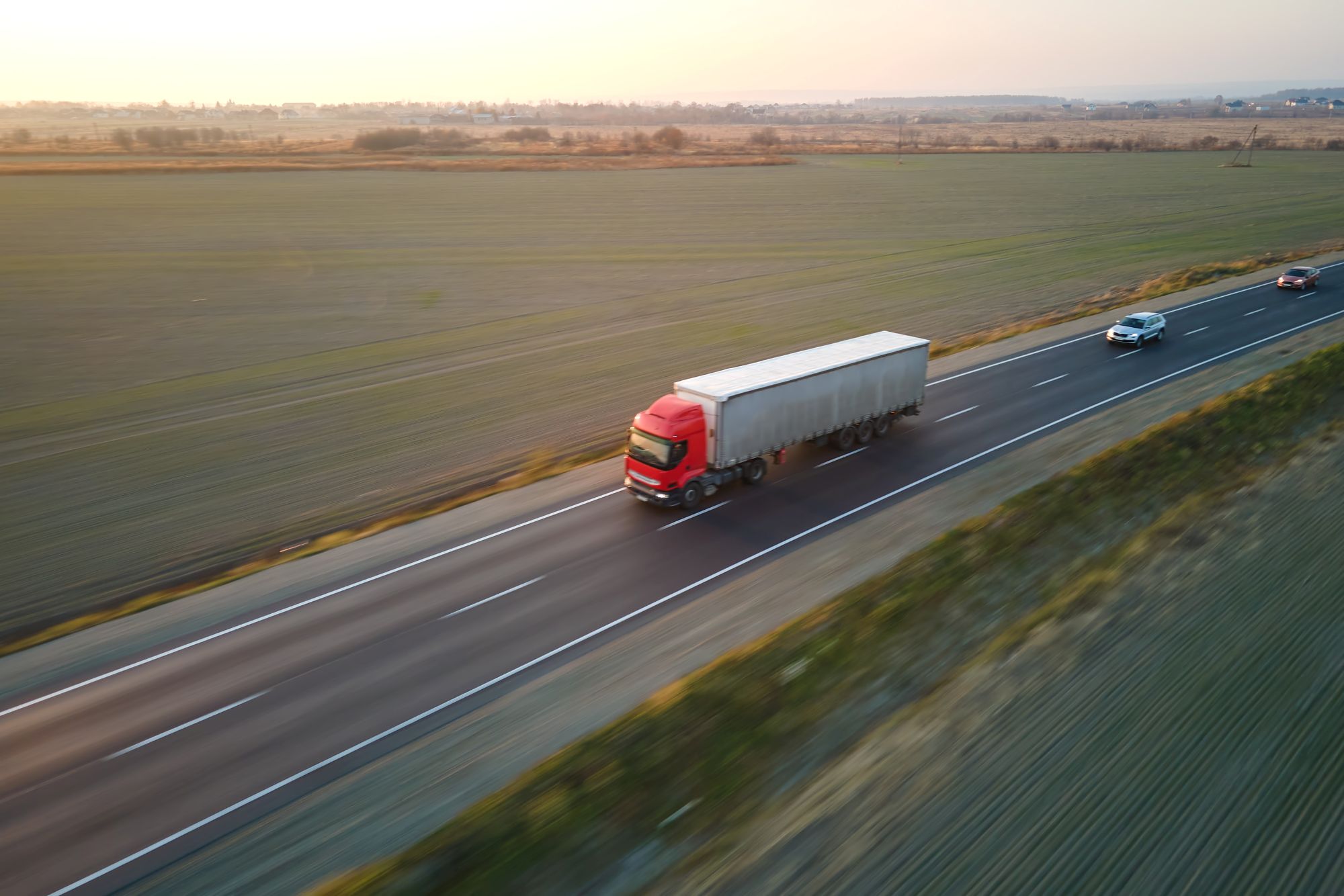
Guest
How Europe's heatwave is affecting mobility: How to stay ahead
Created: 31/07/2025
•
Updated: 31/07/2025
Europe’s roads are baking – and the heat is only rising. Across the continent, July 2025 delivered record-breaking temperatures, infrastructure failures and transport disruption on an unprecedented scale. For fleet operators and professional drivers, the challenge is no longer theoretical. Extreme heat is here and it’s reshaping the mobility landscape in real time.
Much has been written about the health impacts and climate signals of this year’s heatwave. But far less attention has been paid to how it’s affecting logistics, freight networks and the people who keep goods moving across borders.
This article explores how heatwaves are disrupting Europe’s road transport sector – from melting tarmac and cracked motorways to wildfires, driver safety concerns and delivery delays – and offers practical advice to help fleets stay operational, resilient and one step ahead.
Heatwaves are becoming the new normal
According to the World Meteorological Organization, Europe regularly experiences extreme heat, with temperatures well above seasonal norms. In the first week of July 2025, Germany recorded highs above 39°C, while Spain and Portugal faced temperatures exceeding 46°C during the month. Europe, as a whole, is warming at roughly twice the global average.
These conditions are not just uncomfortable – they’re operationally disruptive. Research cited by Logistics Business shows that heatwaves are a growing risk factor for freight operations, reducing driver welfare, damaging cargo and delaying deliveries.
As a result, temperature-sensitive cargo such as food, pharmaceuticals and electronics are becoming harder to move safely. Operators are seeing rising spoilage rates and late delivery penalties. The situation is especially complex in areas where power grids are stretched by increased cooling demand, reducing cold chain reliability.
Melting roads and cracked highways
One of the clearest signs of heat’s toll on mobility came in early July, when parts of Germany’s autobahn network began to crack under the pressure of thermal expansion. Sections of the A1, A9 and A10 motorways, amongst others, were closed for urgent repairs as concrete slabs buckled and joints ruptured – a direct consequence of the country’s prolonged heatwave.
As ground temperatures rise and vegetation dries out, wildfires are also becoming a regular – and dangerous – feature of European summers. According to Wikipedia’s 2025 European heatwave summary, wildfires have broken out across southern Spain, Germany and Greece, prompting mass evacuations and the temporary closure of major roadways and border crossings.
In June 2025, the A939 in Scotland was closed due to wildfires, while fires closed several roads and road tunnels around Marseille in France. These closures don’t just create traffic chaos – they mean that HGVs have to reroute, often through narrow, unsuitable roads that can extend journey times by hours.
In addition, smoke reduces visibility for drivers and poses health risks, especially for those spending long hours in-cab with inadequate air filtration. And in many areas, emergency services are stretched, meaning delays in clearing affected roads or managing diversions.

Driver safety
The risks to infrastructure are accompanied by risks to people. Professional drivers are particularly vulnerable to heat stress, dehydration and fatigue. SNAP’s own summer guide for drivers outlines the dangers of overheating cabs, the strain of long hours in high temperatures, and the importance of cooling systems and rest.
Many roadside facilities in southern and eastern Europe remain poorly equipped to support driver wellbeing during heatwaves. Air-conditioned rest stops, shaded parking and reliable water access are not guaranteed – making SNAP’s network of verified, comfortable locations more important than ever.
“This summer’s heatwave is a wake-up call,” says Raquel Martinez, European Sales Manager at SNAP. “Europe’s transport systems were designed for a cooler climate. But we’re not going back. Fleets that adapt now – with the right tools, the right rest strategies, and the right technology – will be the ones that thrive.”
Truck bans begin across Europe
In response to the heat, several countries have introduced or extended heat-triggered truck bans. As TrafficBan.com reports, Bulgaria and Hungary enforced daytime HGV restrictions when temperatures soared in July 2025. Restrictions also applied to heavy vehicles on certain vulnerable roads during specified periods.
In addition, national holiday-related truck bans in Germany, France, Poland and Italy are compounding summer congestion. Full details can be found at Trafficban.com, which lists regional and time-based restrictions across the continent.
For drivers and planners, these bans create a patchwork of compliance zones and timing limitations that require careful navigation and up-to-date planning tools.
Insurance impact
With the increasing risks posed by extreme heat, insurers are starting to reassess their exposure. That’s likely to affect premiums across the board. Goods-in-transit cover is under pressure, particularly for temperature-sensitive loads, with more claims arising from spoilage and missed delivery deadlines. Vehicle insurance costs may also rise as claims for heat-related breakdowns and accidents increase.
Meanwhile, there’s growing scrutiny around employers’ liability, especially if drivers or staff suffer heat-related health issues due to inadequate welfare provisions. Together, these trends could mean higher premiums and tougher renewal conversations for operators without clear resilience plans in place.
How to stay ahead of heatwaves
At SNAP, we believe the key to navigating Europe’s heatwaves lies in preparation, planning and proactive welfare management.
Here’s what operators can do:
Plan for temperature and terrain: Use real-time weather data to help drivers avoid high-risk routes.
Equip drivers for the conditions: Stock vehicles with water, shade equipment and emergency cooling kits.
Check regulations daily: Stay informed of changing truck bans across borders using verified sources like Trafficban.com.
Optimise rest stops: Encourage drivers to use apps like intruck to locate well-equipped, air-conditioned facilities across Europe.
Maintain vehicles for heat: Pay extra attention to tyres, cooling systems and battery performance during maintenance – especially for electric or hybrid vehicles.
Review insurance and risk plans: Ensure policies account for climate-related delays, cargo spoilage and fire damage.
Start planning for heatwaves today
Check out our interactive SNAP map or download the intruck app today. With thousands of trusted partners across Europe, it’s your shortcut to safer stops – whatever the temperature.



